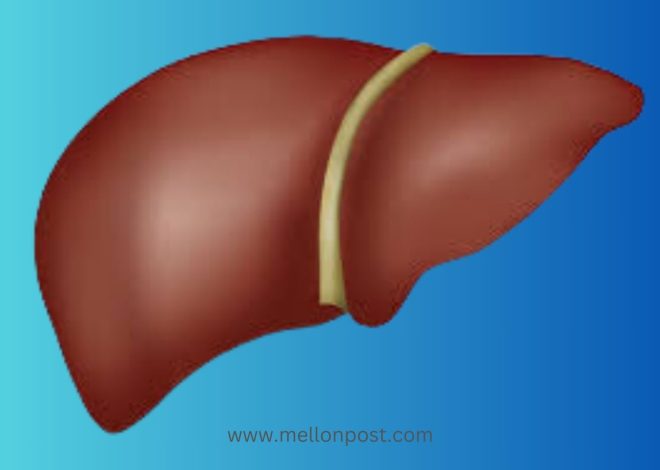
The Impact of Smoking on Health: Understanding the risks
Table of Contents
According to the World Health Organization (WHO), the impact of smoking is responsible for over 8 million deaths globally each year.
Smoking is one of the most significant public health problems worldwide, with numerous health risks associated with it.
This number is expected to rise to 10 million by 2030 if the current trend of smoking continues.
In this blog post, we will discuss the health risks associated with smoking, including cancer, respiratory diseases, cardiovascular diseases, reproductive problems, and other health problems.
Cancer
Smoking is a leading cause of cancer worldwide. Tobacco smoke contains carcinogens, which are substances that cause cancer.
The most common cancers associated with smoking are lung, throat, esophageal, pancreatic, bladder, kidney, and cervical cancers.
In addition, smoking can increase the risk of developing other types of cancer, such as breast cancer, stomach cancer, and colon cancer.
The risk of developing cancer increases with the number of cigarettes smoked and the duration of smoking.
Respiratory diseases
Smoking is a major cause of respiratory diseases, including chronic obstructive pulmonary disease (COPD), emphysema, and chronic bronchitis.
These diseases cause breathing difficulties, coughing, and wheezing. Smoking damages the airways and air sacs in the lungs, which reduces lung function and increases the risk of infections such as pneumonia.
In addition, smoking can trigger asthma attacks in people with asthma.
Cardiovascular diseases
Smoking is a significant risk factor for cardiovascular diseases, including heart disease, stroke, and peripheral artery disease.
Smoking increases the risk of developing these diseases by damaging blood vessels, causing the build-up of plaque, and reducing blood flow.
It also increases the risk of blood clots and raises blood pressure, which can lead to heart attacks and strokes.
Also read: Heart Health 101: Understanding the basics
Reproductive problems
Smoking has been linked to some reproductive problems in both men and women. Women who smoke are at increased risk of infertility, miscarriage, premature birth, and low birth weight.
Smoking during pregnancy can also cause developmental problems in the fetus and increase the risk of sudden infant death syndrome (SIDS).
Men who smoke are at increased risk of erectile dysfunction, reduced sperm count, and sperm abnormalities.

Other health problems
Smoking is associated with numerous other health problems, including:
- Weakened immune system: It weakens the immune system, making it harder for the body to fight infections and diseases.
- Vision problems: Smoking increases the risk of developing cataracts and age-related macular degeneration, which can cause blindness.
- Dental problems: It increases the risk of gum disease, tooth loss, and oral cancer.
- Skin problems: Smoking can cause premature aging, wrinkles, and skin discoloration.
In conclusion, quitting smoking is the best way to reduce these risks and improve overall health. If you are a smoker, consider quitting smoking today to protect your health and the health of those around you.
How smoking affects the body
Smoking is one of the most significant preventable causes of disease and death worldwide. It affects almost every organ in the body and is responsible for numerous health problems.
In this section, we will discuss how smoking affects the body, including nicotine addiction, carbon monoxide poisoning, damage to the lungs, damage to the heart and blood vessels, and damage to other organs and systems.
Nicotine addiction

Nicotine is a substance contained in tobacco that is known to be highly addictive.
When a person smokes, nicotine is absorbed into the bloodstream, where it stimulates the release of dopamine, a neurotransmitter that produces feelings of pleasure and reward.
Over time, as one continues to consume nicotine content, the brain tends to become dependent on it for the feelings of pleasure and rewards that it induces.
Also read: The Immune System: How it works and how to keep it strong
This dependency can then lead to a case of withdrawal symptoms if the person decided to quit smoking.
These symptoms include irritability, anxiety, difficulty concentrating, and cravings for nicotine.
Carbon monoxide poisoning
Smoking releases carbon monoxide, a toxic gas that can be harmful to the body. Carbon monoxide binds to hemoglobin in the blood, reducing the amount of oxygen that can be carried to the body’s organs and tissues.
This can cause symptoms such as headaches, dizziness, and fatigue. In severe cases, carbon monoxide poisoning can lead to unconsciousness, brain damage, and death.
Damage to the lungs
Smoking can cause significant damage to the lungs, including chronic bronchitis, emphysema, and lung cancer.
Chronic bronchitis is characterized by inflammation of the airways, which causes coughing and mucus production.
Emphysema is a condition where the walls of the air sacs in the lungs are damaged, reducing the ability of the lungs to absorb oxygen.
Lung cancer is the most deadly cancer and is strongly linked to smoking. It is estimated that over 85% of lung cancer cases are caused by smoking.
Damage to the heart and blood vessels
Smoking increases the risk of developing heart disease and stroke. This is because smoking damages the lining of the arteries, which causes the buildup of plaque, reducing blood flow to the heart and brain.
This can cause chest pain, heart attacks, and strokes. It also increases the risk of developing peripheral artery disease, a condition that affects the blood vessels in the legs and arms.

Damage to other organs and systems
Smoking can also cause damage to other organs and systems in the body, including:
- Digestive system: Smoking can increase the risk of developing ulcers and acid reflux disease.
- Reproductive system: Smoking can cause fertility problems, erectile dysfunction, and menstrual problems in women.
- Immune system: Smoking weakens the immune system, making it harder for the body to fight infections and diseases.
- Skin: Smoking can cause premature aging, wrinkles, and skin discoloration.
If you are a smoker, consider quitting smoking today to protect your health and the health of those around you.
Also read: Tuberculosis: Causes, Symptoms, and Treatment
Who is at risk
Smoking is a major cause of disease and death worldwide, affecting millions of people every year.
While smoking can affect anyone, certain groups of people may be at a higher risk of developing smoking-related health problems.
In this section, we will discuss who is at risk, including age, gender, genetic factors, lifestyle factors, and exposure to secondhand smoke.
Age
The younger a person starts smoking, the more damage they can do to their health.
People who start smoking at a young age are more likely to become addicted and have a harder time quitting later in life.
Smoking can also have more severe health effects on older adults, particularly those over the age of 65.
Older adults who smoke are more likely to develop the chronic obstructive pulmonary disease (COPD), which can be a debilitating and life-threatening condition.
Gender
Both men and women can be affected by smoking, but there are some gender differences in the health risks associated with smoking.
Women who smoke are more likely to develop cervical cancer and have problems with pregnancy and fertility. Men who smoke are more likely to develop erectile dysfunction and certain types of cancer, such as bladder and kidney cancer.
Genetic factors
Some people may be more genetically susceptible to the harmful effects of smoking than others.
For example, people with a family history of lung cancer may be more likely to develop the disease if they smoke.
Genetic factors can also affect how quickly a person becomes addicted to nicotine and how likely they are to successfully quit smoking.
Lifestyle factors
Lifestyle factors, such as diet, exercise, and stress levels, can also impact a person’s risk of developing smoking-related health problems.
People who have poor diets, are sedentary, and have high levels of stress may be at a higher risk of developing heart disease, stroke, and other health problems related to smoking.
On the other hand, people who lead healthy lifestyles and exercise regularly may be able to reduce their risk of developing these health problems, even if they smoke.
Secondhand smoke
People who are exposed to secondhand smoke are also at risk of developing smoking-related health problems.
Secondhand smoke contains many of the same harmful chemicals as smoke from a cigarette and can cause lung cancer, heart disease, and other health problems in non-smokers.
Children and infants are particularly vulnerable to the effects of secondhand smoke, as their bodies are still developing.
In conclusion, smoking can affect anyone, but certain groups of people may be at a higher risk of developing smoking-related health problems.
If you are a smoker, it is important to be aware of your risk factors and take steps to reduce your risk of developing these health problems.
If you are exposed to secondhand smoke, it is important to take steps to protect yourself and your loved ones, such as avoiding places where people are smoking and encouraging others to quit smoking.

How to quit smoking
Smoking is a harmful habit that can have serious health consequences, but quitting smoking is not always easy.
Quitting smoking just like other forms of addiction will require a combination of strategies before one can be able to overcome the nicotine addiction and break the habit.
In this section, we will discuss some effective strategies for quitting smoking, smoking cessation aids, and support and resources that can help you quit smoking for good.
Strategies for quitting:
- Cold turkey: Some people find success by quitting smoking abruptly without any aid or support. This method involves throwing away all tobacco products and immediately stopping smoking.
- Gradual reduction: Another approach is to gradually reduce the number of cigarettes smoked each day until eventually quitting completely. This method can be effective for people who are not ready to quit cold turkey.
- Nicotine replacement therapy: Nicotine replacement therapy involves using products that contain nicotine, such as nicotine gum or patches, to help reduce cravings and withdrawal symptoms.
- Medications: Several prescription medications can help reduce cravings and withdrawal symptoms associated with quitting smoking.
- Behavioral therapy: Behavioral therapy involves working with a counselor or therapist to develop strategies for managing cravings, reducing stress, and changing behaviors associated with smoking.
Smoking cessation aids:
- Nicotine replacement therapy: Nicotine gum, patches, and lozenges are available over-the-counter and can help reduce cravings and withdrawal symptoms.
- Prescription medications: Medications such as bupropion and varenicline can help reduce cravings and withdrawal symptoms and improve the chances of successfully quitting smoking.
- Electronic cigarettes: Electronic cigarettes, or e-cigarettes, are battery-powered devices that deliver nicotine through an aerosol. While e-cigarettes are less harmful than smoking traditional cigarettes, they are not completely risk-free and should be used with caution.
Support and resources:
- Quitline services: Many countries have quitline services that provide free support and resources to people who want to quit smoking.
- Support groups: Joining a support group, either in person or online, can provide a sense of community and support during the quitting process.
- Counseling: Seeing a counselor or therapist can help address underlying issues, such as stress or anxiety, that may be contributing to smoking.
- Mobile apps: Several mobile apps can provide support, motivation, and tips for quitting smoking.
In conclusion, quitting smoking is not easy, but it is possible with the right strategies and support. It may take several attempts before successfully quitting smoking, but it is important to keep trying.
By using smoking cessation aids, seeking support and resources, and developing a personalized plan for quitting smoking, you can improve your health and quality of life.
Smoking is a dangerous habit that can have serious health consequences, but it is not always easy to quit.
Despite the challenges, quitting smoking is an essential step toward improving your health and quality of life.
In this blog post, we have discussed the health risks associated with smoking, how smoking affects the body, who is at risk, and effective strategies for quitting smoking.
In this final section, we will provide a call to action for quitting smoking and offer some final thoughts and recommendations.

Call to action for quitting smoking
If you are a smoker, we encourage you to take action towards quitting smoking today. Here are some steps you can take:
- Set a quit date: Choose a date when you will quit smoking and commit to it.
- Make a plan: Develop a plan for quitting smoking that includes strategies for managing cravings and withdrawal symptoms, smoking cessation aids, and support and resources.
- Seek support: Reach out to friends, family members, or a support group for encouragement and accountability.
- Stay positive: Quitting smoking is a difficult process, and setbacks are common. Stay positive and focus on the benefits of quitting smoking.
Final thoughts and recommendations:
- It’s never too late to quit: No matter how long you’ve been smoking, quitting can have immediate health benefits.
- Be patient and persistent: Quitting smoking is a process, and it may take several attempts to succeed.
- Avoid triggers: Identify and avoid situations or activities that trigger your urge to smoke.
- Stay active: Exercise and physical activity can help reduce stress and improve your overall health.
- Celebrate your success: Celebrate your milestones and successes along the way to quitting smoking.
In conclusion, quitting smoking is a challenging but worthwhile endeavor. By taking action towards quitting smoking, seeking support and resources, and staying positive and persistent, you can improve your health and quality of life.
Don’t wait another day to take the first step towards quitting smoking. Your health and well-being are worth it.
Continue reading: Mental Health 101: Understanding the Basics


